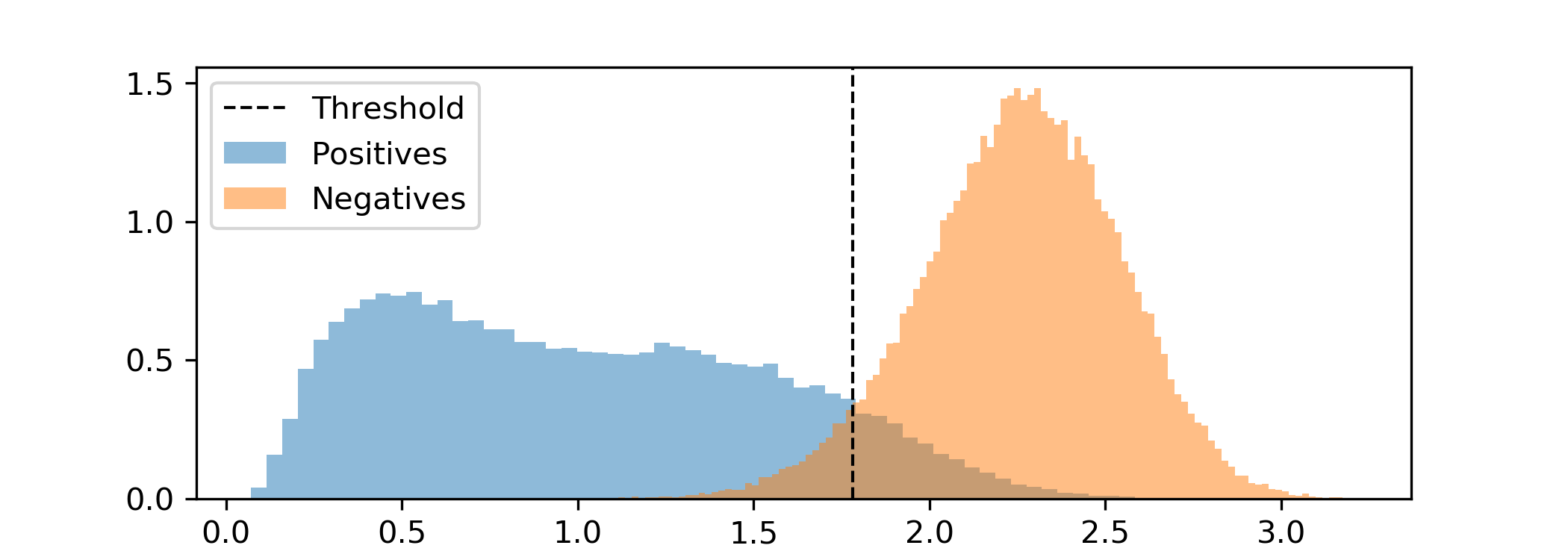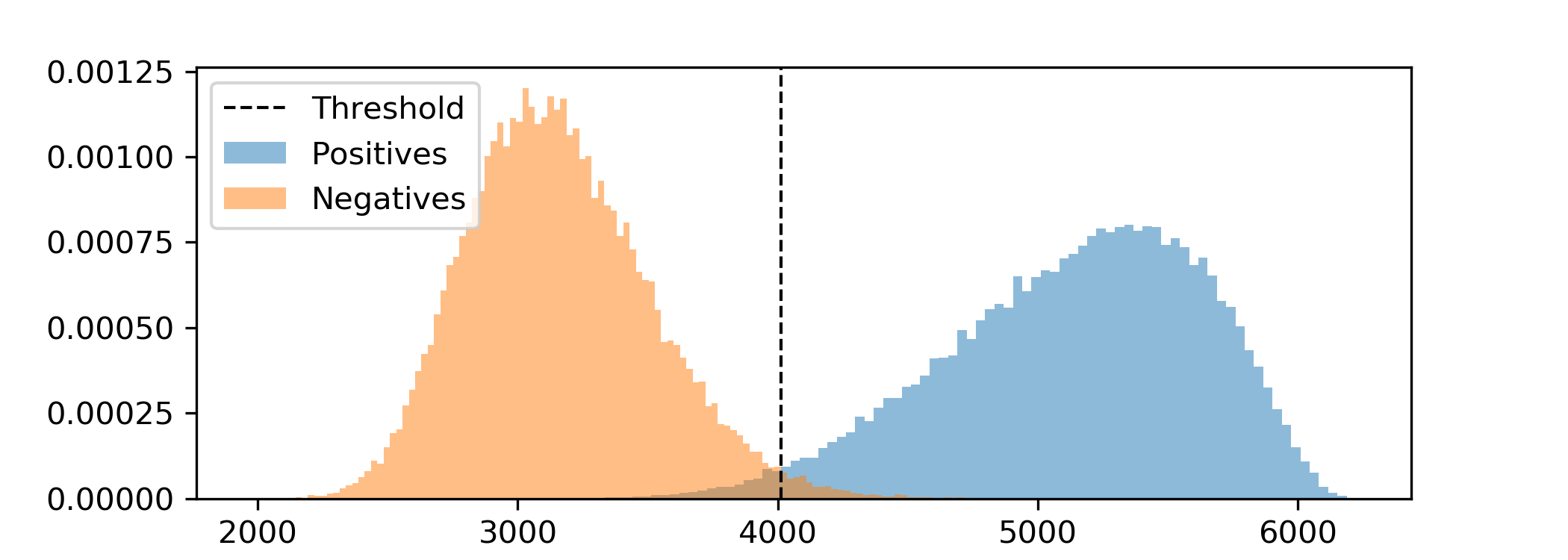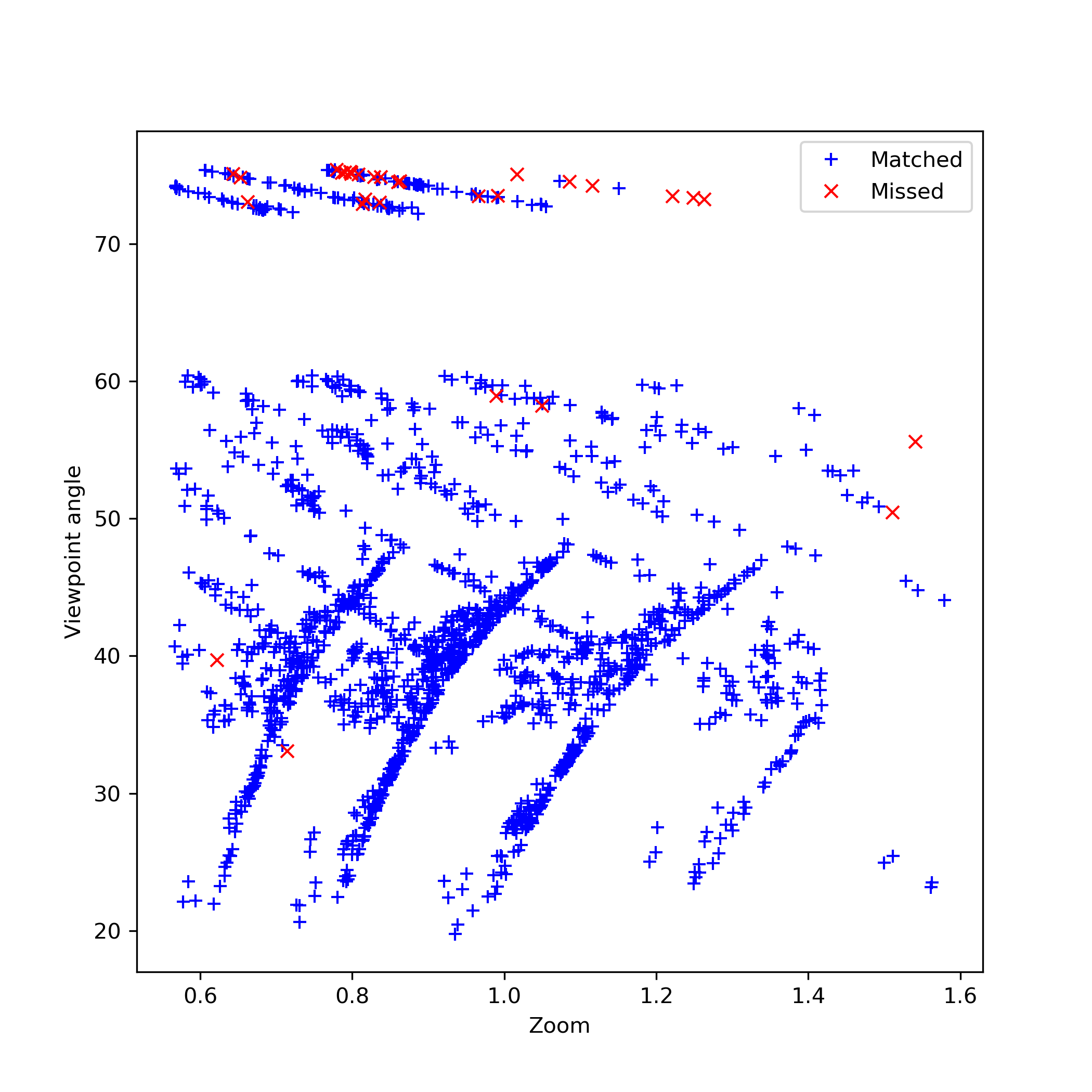AID : an affine invariant descriptor for SIFT
Full Title: “SIFT-AID: boosting SIFT with an affine invariant descriptor based on convolutional neural networks”
Authors: Mariano Rodríguez, Gabriele Facciolo, Rafael Grompone von Gioi, Pablo Musé, Jean-Michel Morel and Julie Delon
Conference: ICIP 19
Abstract: The classic approach to image matching consists in the detection, description and matching of keypoints. The descriptor encodes the local information around the keypoint. An advantage of local approaches is that viewpoint deformations are well approximated by affine maps. This motivated the quest for affine invariant local descriptors. Despite numerous efforts, such descriptors remained elusive, ultimately resulting in the compromise of using viewpoint simulations to attain affine invariance. In this work we propose a CNN-based patch descriptor which captures affine invariance without the need for viewpoint simulations. This is achieved by training a neural network to associate similar vectorial representations to patches related by affine transformations. During matching, these vectors are compared very efficiently. The invariance to translation, rotation and scale is still obtained by the first stages of SIFT, which produce the keypoints. The proposed descriptor outperforms the state-of-the-art in retaining affine invariant properties.
News
- 22/02/2019 - The matcher code is now optimized and available in the github repository. For example, under the same hardware settings reported in the first version of the manuscript, we go from 4.4s to 0.77s for the coke pair. The level of performance is now similar to the OpenCV SIFT Matcher (0.5s).
Highlights on Notredame


Testing AID
In order to reproduce or to further test AID descriptors we suggest to follow all the instruction appearing in SIFT-AID’s github repository.
Density estimations
python py-tools/gen-ICIP19-HistoThresholds.py
Positive and negative density estimation on measurements. For that, 60000 random intra and extra class pairs were used. The vertical line depicts the threshold minimizing both error probabilities: false negatives and false positives.
| RootSIFT L2 Norm | AID Sign Alignments |
 |
 |
Testing on true matches from Affine-RootSIFT
Lets investigate if those matches seen by Affine-RootSIFT and not seen by SIFT-AID are really AID’s fault. For that, the following test bypasses the first stages of SIFT and manually selects precise SIFT keypoints in the respective Gaussian pyramids of the query and target images. These precise keypoints are the best possible choices that could have been found by the first stages of SIFT.
Modify the following lines in launch-ICIP19-test.py
test_OnFiltered_ARootSIFT = True
test_timePerformances = False
and execute
python py-tools/launch-ICIP19-test.py
Command output:
./acc-test/coca
AID score on SIFT Keypoints created from ASIFT Keypoints 100%, if applied only on true matches this should hold 1113=1113
./acc-test/notredame
AID score on SIFT Keypoints created from ASIFT Keypoints 92%, if applied only on true matches this should hold 24=24
./acc-test/arc
AID score on SIFT Keypoints created from ASIFT Keypoints 97%, if applied only on true matches this should hold 189=189
./acc-test/graf
AID score on SIFT Keypoints created from ASIFT Keypoints 81%, if applied only on true matches this should hold 107=107
./acc-test/adam
AID score on SIFT Keypoints created from ASIFT Keypoints 100%, if applied only on true matches this should hold 191=191
Overall AID score ( 98%): 1624 Matched, 34 Missed
This experiment reveals that AID would have been sufficient to identify almost all Affine-RootSIFT matches, provided that proper keypoints had been correctly spotted by the first stages of SIFT.
Let’s now dig deeper on those missed matches. The following figure plots missed and retrieved matches with respect to zoom and viewpoint angle differences between patches. Those quantities were computed by the means of local affine approximations (first order Taylor development) of ground truth homographies.

Notice that most of the missing matches for AID descriptors involve viewpoint angles close to 75 degrees (the maximal viewpoint angle present in the training dataset). They come from the graffiti pair.
Testing on all keypoints from Affine-RootSIFT
This test appears in our paper as Test II in Table 1. It can be obtained with a simple hack, simply modify csv files in the acc-tests folder by:
- Download and compile Fast image matching by affine simulations.
- Execute the command below and its output csv files should override csv files in the acc-tests folder.
./main -im1 img1.png -im2 img2.png -desc 11 -match_ratio 1 -applyfilter 0
This test also says that not only we could have seen most Affine-RootSIFT matches but also many more (provided that better keypoints were computed).
SIFT-AID performances
This test gives information on the number of matches in consensus with an homography (corresponding to Test I in Table 1 of our paper) and elapsed time in computing descriptors and matching them (corresponding to Table 2 of our paper).
Modify the following lines in launch-ICIP19-test.py
test_OnFiltered_ARootSIFT = False
test_timePerformances = True
and execute
python py-tools/launch-ICIP19-test.py
In order to reconstruct results for Affine-RootSIFT, please download and compile Fast image matching by affine simulations. Then, copy the main executable to acc-test/z_main and uncomment the following lines in launch-ICIP19-test.py.
method = 'Optimal Affine-RootSIFT'
total, good_HC, ET_KP, ET_M, KPs1, KPs2, simus = IMAScaller(img1,img2, desc = 11)
full_info += (good_HC,total,ET_KP,ET_M)
print(method+" --> HC = %d, TM = %d, ET_KP = %3.3f, ET_M = %3.3f" %(good_HC,total,ET_KP,ET_M))
Remark: HC stands for Homography consistent Matches, TM - Total Matches, ET_KP - Elapsed Time in KeyPoint computation and ET_M - Elapsed Time in Matching.

